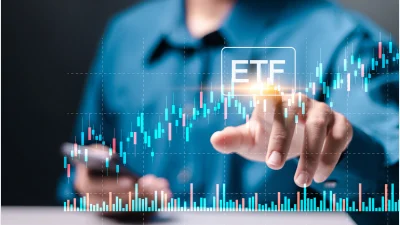Fixed income ETFs to reach US$6tn in 5 years



Active ETFs have hit a “critical inflection point” where launches are now the majority of listings, with a particular growth observed in fixed income products.
Speaking to Money Management at the JPMAM Global Media Summit in London, Travis Spence, global head of ETFs at JP Morgan Asset Management (JPMAM), discussed the growth in active ETFs. Spence has worked at the firm for more than 20 years, and was promoted to the ETF head position last August, in a role that sees him lead ETF product development, capital markets and the ETF insights teams.
Globally, there have been more active ETFs launched every year than passive ones since 2020, he said, and half of all launches this year so far have been active ones, rising to 80 per cent in the US.
Meanwhile, JPMAM’s research found 77 per cent of investors in Asia-Pacific said they wanted to increase or maintain their exposure to active ETFs, the highest of all geographic regions.
“We’ve hit a critical inflection point where now it is the majority, it isn’t just a handful more launches, and that follows the evolution of the overall industry,” Spence said.
“The active ETFs started out in non-traditional sectors, such as derivative income, but in the last three years all of these active ETF launches have been in traditional, core categories and that’s interesting because that’s the bulk of people’s portfolios, and these are the same sectors where mutual funds have been won and lost so now you are seeing ETFs go mainstream. That’s where the industry will evolve. These core sectors are where you want to have active management.”
One of these traditional areas where he sees launches is in fixed income which has traditionally been actively managed. In Australia, Betashares launched a range of three defined income corporate bond ETFs this month, while PIMCO added four active fixed income ETFs to its range in February.
“One of the areas we are seeing particular interest from institutional investors is in fixed income which is traditionally an active asset class that can be difficult to access. They don’t always trade on a daily basis, so ETFs offered via the secondary market offer an extra layer of liquidity and that's an additional benefit. That will be an area of growth going forward.
“It is still early days. The overall bond market is US$140 trillion in size, ETFs are about US$2.5 trillion so less than 2 per cent of the total market of bonds is sitting in ETFs.
"Active management has always been used within fixed income but most of that $2.5 trillion in fixed income ETFs is sitting in passive so that doesn't make sense to where most investors want to be in fixed income. We are seeing a much bigger growth of new ETFs being launched in active fixed income ETFs and we see that as a space that's going to grow a lot more.
“We’re seeing much bigger growth in overall fixed income ETFs now, I forecast it could get from US$2.5 trillion to US$6 trillion in the next five years. The active fixed income ETF part of the market is about US$350 billion out of that US$2.5 trillion and I think that will get to US$1.7-2.0 trillion in the next five years so there's really strong demand."
This echoes comments by State Street which predicted global active fixed income ETF assets under management could reach US$700 billion by year-end 2026, driven by non-US markets. Meanwhile, the ASX’s Andrew Campion, general manager of investment products, expects active launches on the ASX to outpace passive ones this year, with many set to sit in fixed income.
Money Management attended this event as a guest of JPMAM who covered the cost of attendance.
Recommended for you
Magellan fund manager Arvid Streimann has resigned after an investigation into allegations he had a workplace relationship with a junior employee.
Clime Investment Management has sold a portion of its retail client book to an external financial planning practice for $1.6 million in its latest cost-out move.
In his inaugural address as L1 Group chief executive, Julian Russell has outlined his vision and priorities for the newly-merged $16.7 billion business but warned fund outflows will continue for 18 months.
Ten Cap has announced it will launch its first active ETF on the ASX later this month, expanding retail access to its flagship Australian equities strategy.












